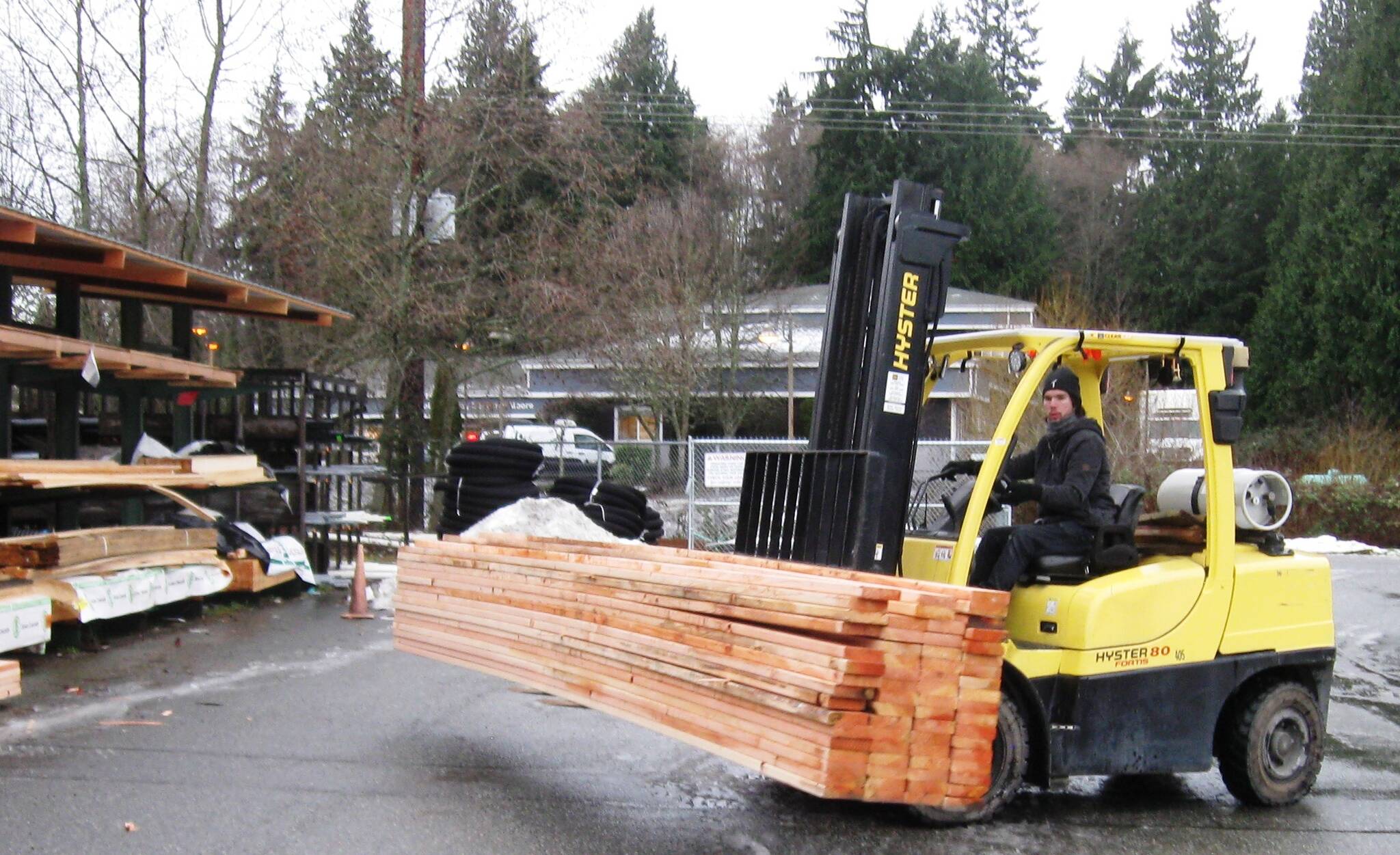From candy bars to propane to cat food, it’s no secret that prices are increasing on Whidbey Island.
While the soaring cost of lumber is perhaps the most extreme example of escalating costs, an economist cautions that higher prices don’t tell the full story about inflation.
“We’ve seen lumber prices almost doubled in the past two months and demand is unrelenting,” said Kelly Fox, president of the company which operates Frontier Building Supply in Freeland and Oak Harbor.
“These skyrocketing prices are almost unheard of. Typically we see lumber prices come down in winter,” he added.
From a simple garden stake to an entire house, anything made of wood will now cost much more.
At the same time, a University of Washington economist observed that inflation is a complicated topic and involves more than increased prices for certain items.
“Inflation is a general increase in price levels, not in some prices relative to others,” Professor Joshua Jacobs said. “We wouldn’t describe a singular increase in lumber prices as inflation.”
Earning power creates important exceptions, Jacobs explained.
“Wages are a price as well, so if all prices double, spending power shouldn’t change,” he said. “Fixed incomes, however, do not increase. Wages don’t rise as quickly as other prices, also reducing purchasing power.”
As if to echo Jacobs, increased product costs means higher wages, said Fox.
“Good workers are an important asset and we’ve had to increase wages to attract and keep employees,” he said. “The situation is hard on everyone and we’ve had some real wage inflation.”
Conditions in the lumber business reflect inflation in other ways, according to Jacobs.
“If consumers believe prices will rise, they want to purchase immediately, leaving empty shelves,” he said. “This high demand can strain supply chains, create incentives for firms to raise prices and lead to an inflationary spiral.”
Fox said high demand for lumber hasn’t yet resulted in shortages. His firm, operating from Bellingham to Port Townsend, has long-term contracts that are even being extended. Still, said Fox, “we’re trying to buy whatever we can wherever we can.”
He said some clients have waited two years to start building projects. There’s additional pressure because people are moving out of major markets, and producers ship lumber where it needs to go. He described Freeland as a “great market” and said developers are building speculative and custom houses in the Oak Harbor area.
Nationwide, an analyst for Jeffries Financial Group says labor and product shortages hamper the pace of increasing construction, and projects already started are stalling.
Fox said most lumber for Northwestern Washington comes from Oregon. Recent floods in the Sumas Valley of British Columbia had a huge impact on supply because rail traffic had to be re-routed.
“There are no commercially significant forest lands in Island County, so industry-wide timber cutting does not affect us as much as mainland counties,” said Marianne Edain of Whidbey Environmental Action Network. “There are very few large forest landowners in Island County.”
Neither Fox nor Jacobs sees an immediate change.
“There isn’t a consensus about whether current inflation is going to persist or be transitory with higher prices stabilizing,” Jacobs said.
“For consumers, inflation means everyday purchases are more expensive. Savings are worth less, but borrowers with fixed rates benefit because payments cost less than at the beginning of the loan,” the UW economist added.
Makers of products like candy bars are charging the same for smaller quantities in the same packages. This condition is termed shrink-flation.
“I don’t have a crystal ball, but I expect high prices for building products until mid-2022,” commented Fox.



